Rainwater: It’s free, falls from the sky nearly everywhere, and is relatively pure.
Without rainwater, lakes and streams and aquifers would dry up and humans and animals would die or be forced to relocate. That’s what is happening in many places around the world today – and our species is probably responsible for these dislocations.
I live on the central California coast, and when I first moved here 13 years ago nearly 30 inches of rain was falling annually. Then a stretch of drought occurred where, some years, we got only 5-7 inches or so – barely enough to keep our coniferous forest alive. Our town of 6,400 was (finally) forced to ante up millions for a so-called portable desalination plant (so-called because it is neither exclusively desalination nor portable).
Years before, some were advocating storing water in giant cisterns above or below ground – water that would be pumped into them from our aquifers. We now have some of those in the town. On a residential level I had one in Oregon years ago, under the garage floor, pumped in from an intermittent canal (Frogs were living in the cistern, and the croaking was freaking out my young son who had a bedroom nearby!).
Rainfall is something we’ve often taken for granted, but it’s not as reliable as it used to be. Disrupted weather patterns often mean we get more rain than we can use for a short while, then long dry periods when water is in short supply. The obvious solution is to store rainwater when it’s plentiful, and use it when it’s scarce.
Related: 100-Year-Old Way to Filter Rainwater in a Barrel
Harvesting the Rain
Being somewhat prophetic (which is a quality that often characterizes preppers), I began developing a homestead-wide rainwater harvesting system several years ago. The water captured would be used to irrigate my quarter-acre property, but could also, in a pinch, be used for cooking, drinking, washing or flushing toilets.
And it’s often abundant and free. When I first moved here I went to a nearby stream which was sending millions of gallons of rainwater out to sea hourly. I bottled some in a clear plastic PVC gallon container, stored it for a year in a dark closet, and then took a look at it; it was still crystal clear. Presumably whatever pathogens were once in it were probably gone (but don’t quote me on it). Even if any did survive standard purification techniques will deal with them. I continue to be amazed at how much pure water isn’t captured before it goes into the ocean…
As a young man I almost perished from dehydration trying to hike a mile straight up from the Grand Canyon from the Yellowstone River on a very hot day – all because I was too worried the water might contain giardelia. Silly me. It’s quite probable that water, running over rocks from snowmelt, was perfectly fine.
For most of you, harvesting rainwater from your roof makes the most sense. If your area gets an average of 18 inches a year, a 1,000 square foot roof can collect over 11,000 gallons of water – depending, of course, on the vessels you have in which to store it!
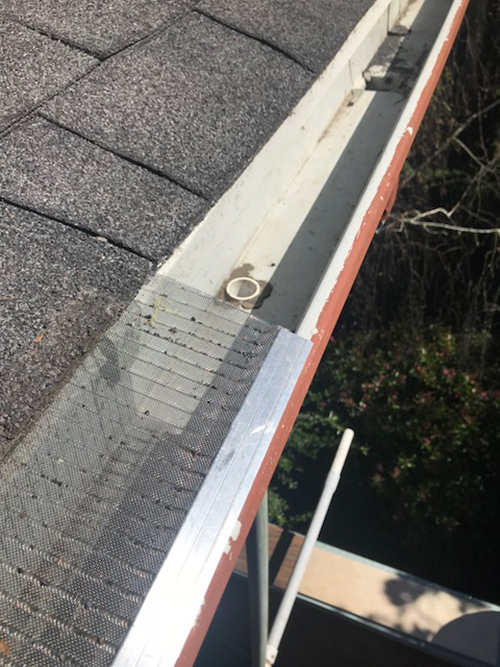
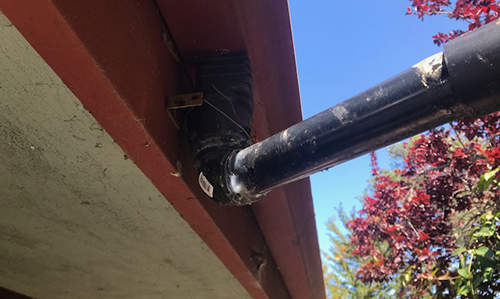
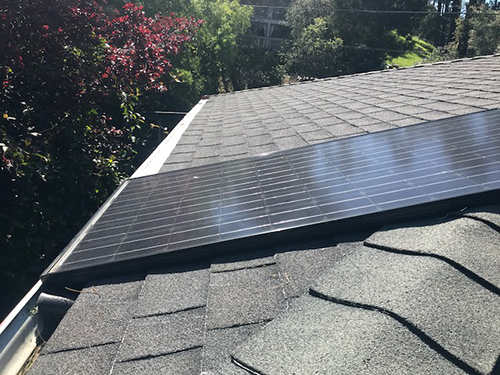
Keeping it Clean
Initially, rainwater collected from your roof is not pure. Bird droppings will defile it, dirt that’s been blown onto the roof will discolor it, and other organic materials will contaminate it. Also, a composition roof will secrete some petroleum-based toxins (Get a metal roof!) But after hard rain of a few minutes duration I do think a roof is scrubbed pretty clean, and I have drunk such water occasionally with no ill effects.
There are also “first flush” mechanisms to reduce detritus, which add some extra protection to your system by letting the first few minutes of rain drain away, then switching to collection once the roof is clean.
Related: Disinfect Huge Amounts Of Water With This Common Household Item
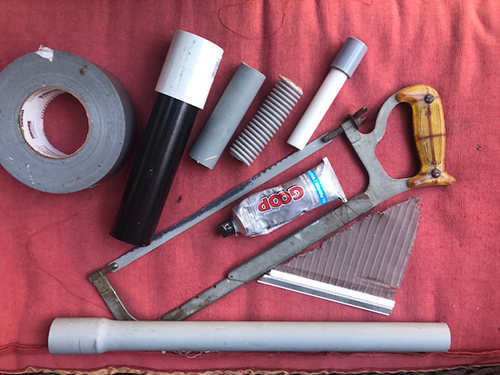
A DIY system like mine will cost anywhere from $1 to $2per gallon of capacity to set up initially, but once it’s paid for there is basically no ongoing maintenance required apart from keeping it clean.
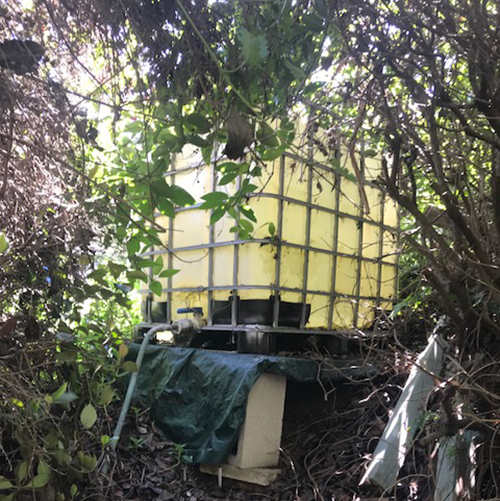
My 2,500 gallons of storage in a variety of vessels has cost about $2,500, with the greatest cost being the 1,100-gallon poly tank that is the heart of the system. That’s sited upslope, so I can gravity feed from it to other barrels lower down.
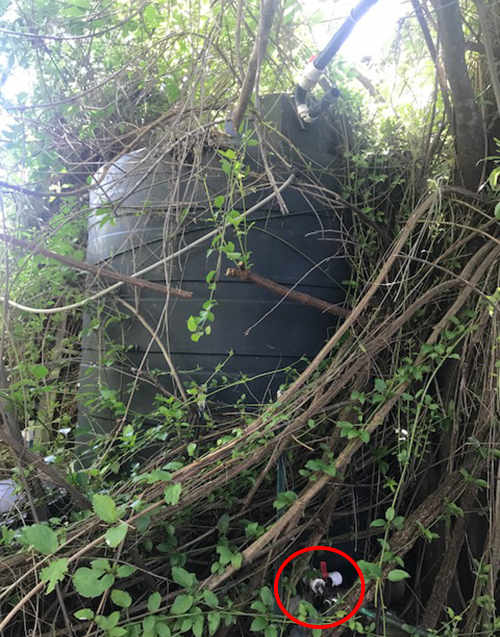
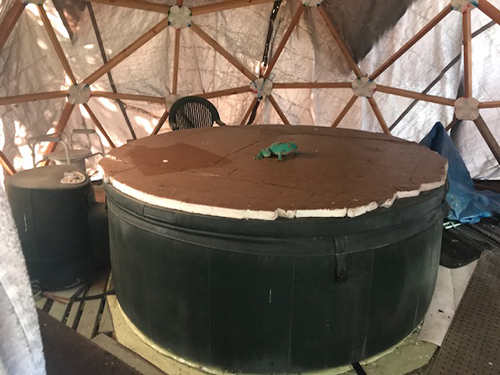
The other vessels I have are diverse: Simple 32-gallon trash barrels, 50-gallon sealed storage barrels, a 275-gallon recycled liquid fertilizer tank, a 300-gallon stock watering tank and an outdoor hot tub that’s not regularly in use. Other ideas include an aboveground vinyl swimming pool (cheap) and a giant plastic/vinyl waterbed-type bladder you can put under your house (pricey).
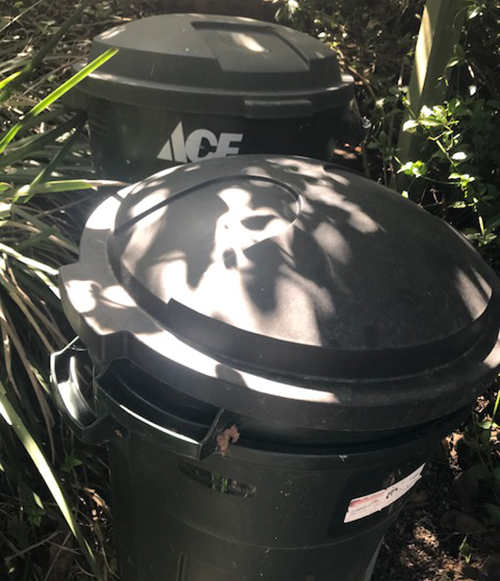
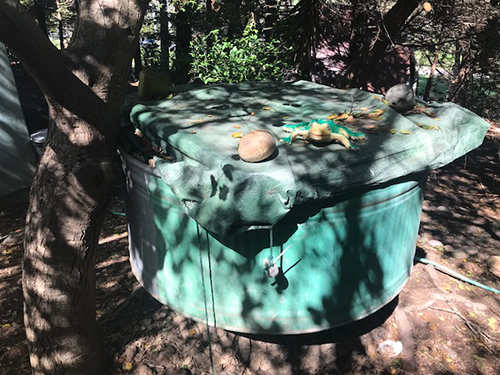
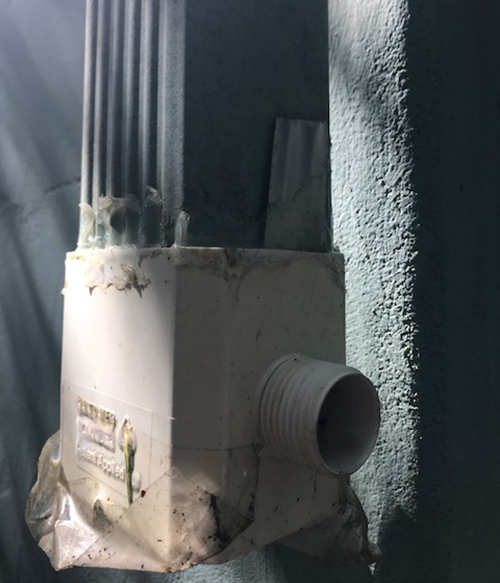
If you feel good about the food you’ve stored, or the back-up power you have through a solar generating system (I’ve designed one, by the way), you’ll feel just as good about the rainwater you have – unless, that is, you live in parts of Canada or the Pacific Northwest and don’t really need it so much. But with climate change even some of those areas are even getting drier, so being able to store what rain does fall is still a good idea.
The best rainwater collection advice comes from an organization in Santa Barbara called Oasis Designs. I’ve put together a small illustrated booklet with a DVD that references Oasis and other sources for specialist rainwater system components. For example, a fine metal screen for gutters from Costco that is an absolute must if you have overhanging trees and want to avoid servicing gutters all the time . The booklet also includes the formula for calculating the amount of rain you can collect, and “35 guerrilla water saving tips.” ($20 from me at P.O. Box 1681, Cambria, CA 93428)
The photos reveal much of the hardware needed for a system. You will also need what I call “plumber’s goop” and possibly silicone sealants. Sealant is especially necessary if your system has pumps and is pressurized (mine isn’t). You will need to get up on ladders initially, but when everything is in place you’ll be doing that less frequently if at all.
If you don’t feel like doing it yourself there are contractors who specialize in rainwater harvesting, but it won’t be cheap. They are often plumbers, and you know how much they charge. But if your goal is to collect rainwater for the rest of your stay at your home, it may be well worth it. And I might add that it’s easier to install than a greywater system because the output is much more usable.
William Seavey recently wrote about his “bug-out” strawbale house in Baja, Mexico.
You may also like:
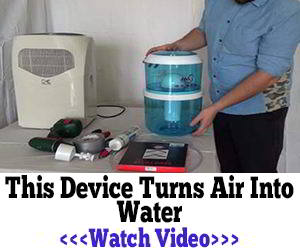 How to Make Your Own Distiller at Home To Filter And Desalinate Water
How to Make Your Own Distiller at Home To Filter And Desalinate Water
How To Make Your House Invisible To Looters (Video)
How to Build a Water Purification System in 10 Minutes
How to Adjust the pH in Soil and Water for Abundant Harvests

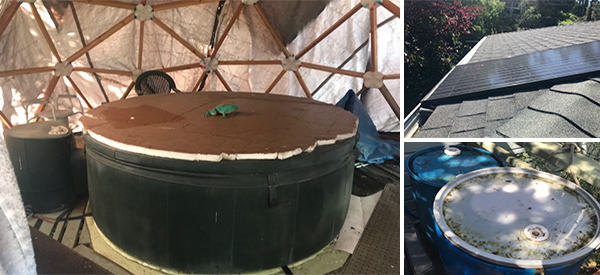














Thank you so much for sharing the best techniques which made our lives easier.I have implemented most of them and I was really satisfied with it.Not only with that I could even provide this source of information for my writing at https://essaycaptains.com/ also.
You may want to note that, since in ever increasing jurisdictions, collecting rainwater is now illegal, anyone considering this may want to check local statutes. A quick internet search will verify this.
http://www.ncsl.org/research/environment-and-natural-resources/rainwater-harvesting.aspx
Very good link Chuck. Thank you.
JohnC,
Not only is rain water collection illegal but also gray water collection for your garden and lawn is illegal in some areas. My brother lives in Colorado and was cited because a nosey neighbor saw his diverter valve while in his house and turn him in to the Home Owners Association who called the state.
If you are going to do something that your state doesn’t collect money from you better not let anyone know about it.
It would be great if one day that nosey neighbor woke up and realized his plumbing was on the fritz and needed a few jugs of water. And then your brother would have the satisfaction of watching that jackass carrying heavy jugs to his house.
People like that are such self righteous morons. And they are usually the first people to break the rules when it suits them. They don’t have a house and a yard to create a life or meet their needs, but rather design the house and yard to create some impression they want to give to others. All fakes and phonies who judge everybody and live in fear of what others think of them.
SPOT ON !
Up Next. Collecting air for breathing made illegal……..
Jake, maybe it will come to that! Hope not…(author)
They already tax and regulate the air. And if not in compliance epa slaps a hefty fine for violations. Now just where does all that money go?
Thanks Claude we really appreciate all that you send us.
We live on a hill and want to plant a small orchard (about 30 trees)(we get 12 inches of rain per year) but can’t unless we find a way to harvest and save the 80,000 gallons that comes down our street into a small canyon on my property per year. I could dig a well but that would take about $10,000 or more because we have to go so deep and it may go dry. My property is at the beginning of the canyon. Are there any legal issues about harvesting this water? No one uses the water down below us.
Any ideas?
I would grab that water and use it. Don’t tell anybody. Don’t tell anybody. People now days tell off on their private business too much. Lots a things happen here and mums the word.
Oh, I so agree!!!! Don’t tell anybody anything! “Loose lips sink ships”
By all means never post your success on Facebook LOL
Always, always, always…think…OPSEC.
Nice article. I like the use of PVC pipe and just creating a good seal. I have also seen rain barrels made from trash cans, which not only look just as nice, but work just as well, are easier to get and inexpensive.
Inexpensive and low key is the way to go. Legal or not, acceptable to anyone or not, it’s best not to let anyone know you have water stored away anymore than you’d want them to know you have food, ammunition or any gear or supplies to survive a crisis.
I believe in spreading the word about being prepared and sharing knowledge, but there are so many damn self righteous types who misunderstand or are just plain stupid and ignorant about prepping. They feel like anything different or not the norm to them must be bad and so they complain or hold it against you.
One of the best storage containers is a new concrete septic tank under ground. they come with a clean-out hatch you can enter and clean. The water stays fresh and cool. and easy to repair. The plastic tanks often give a funny taste and are not under ground. If you can taste the plastic, it ain’t good to drink.
My next new project after getting some old o es done. Any suggestions on getting started?
You first need to find ways to route water out of your gutters in such a way that storage tanks of whatever choice can be filled. The pix in the article are pretty self explanatory. So much water goes down gutters into the sewers that could be harvested, and it isn’t likely to be adequately or inexpensively recycled.
I would question the idea of using a ‘recycled liquid fertilizer’ container such as the one pictured. That type of container might be OK if it was new and unused.
They sell 55 gallon drums rated HDPE2 around here for $20.00 to $25.00. I already have 8 of those filled and sanitized,stabilized.Water totes are $45 to$60 for the 275 gallon and 330 gallon tanks. Problem is I have to drive to the next state over to get them. I still plan on it.
FYI I don’t use the rainwater generally for anything but irrigating plants and trees. What goes into my big 1000 gallon tank is potentially potable with a few drops of bleach per gallon if I ever had to use it. I’m not that afraid of it anyway if I capture it from a well rinsed roof and tap a higher level of the tank. I just improved, with long wooden pole supports, needed to stabilize the 3 inch pipes the distance from the roof to the main tank.